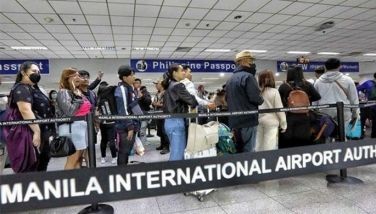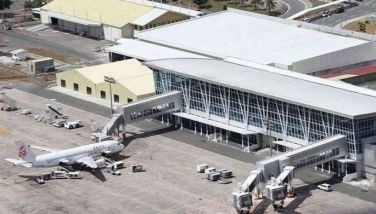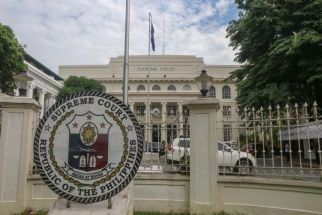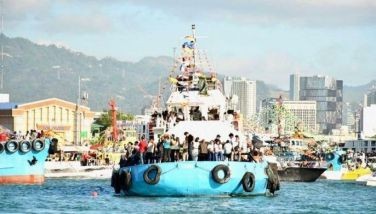Finally, good news from Ninoy Aquino International Airport... but...

It has finally happened. I have been writing about this need for years. CAAP has inaugurated a state of the art Eurocat 200 air traffic and navigational system at NAIA. We needed a new system like this ages ago to replace our outdated system. But the project was unreasonably delayed by then DOTC Sec Mar Roxas.
Former CAAP director general Ramon Gutierrez, in a conversation I had with him, emphasized the need for this upgrade way back in 2012. But Gutierrez lamented that the rules for doing anything in government are just too cumbersome and political. Here is how I reported it in this column April 2, 2012:
“Take a vital piece of equipment that guides planes in our air space as they fly through and as they take off and land. The strategic vision of the international civil aviation community is to achieve integrated global air traffic management through the worldwide implementation of Communications, Navigation, Surveillance and Air Traffic Management (CNS/ATM). They are talking of seamless skies… using satellites instead of land based radars.
“Our horse and buggy system, needless to say, needed upgrading a long time ago. We are internationally committed to have this state of the art system by 2015. During her watch, Ate Glue’s minions at DOTC enlisted JICA to help. But it took them too long to get anything done and by the time they signed contracts, the new administration came in.”
I understand why former DOTC Sec Ping de Jesus reviewed the project when he took over. No one can trust the DOTC kapulisan of the Arroyo administration that brought us the ZTE-NBN deal.
After reviewing the contracts, Sec Ping cleared the implementation of the CNS/ATM system before he left office. But when Mar took over, he stopped implementation to study it again. And when I talked with Gutierrez, it was nine months after and nothing was moving.
Gutierrez said that if and when the decision to go is given, the specifications must be redesigned to account for the growth of budget carriers and the adoption of open skies. The system should be able to handle the increased traffic…
We needed that system like as of yesterday. One of the reasons planes have to circle around NAIA and why flights are always delayed with long lines of aircrafts waiting to take-off is because we don’t have a modern system for air traffic control. The delay we experienced certainly has implications to our economy’s competitiveness, something every airline passenger over the last few years have experienced in terms of delayed take-offs and landings.
What was inaugurated this week is a step in the right direction, even if it still is a stop-gap measure. It is not enough. This one is only for Manila. We need the ATM/CNS system to cover the whole country and we won’t have that until the end of 2016. Indeed, I am told, this newly inaugurated P160-million system upgrade may be dismantled when the ATM/CNS comes on line.
Still, we should be thankful for small miracles. This Eurocat 200 features a computerized air traffic control and management solution that control en route, over flights, arriving, and departing air traffic from as far as 250 nautical miles.
As CAAP director general William Hotchkiss explained, the Eurocat 200 would enable the Philippines to detect any entry of commercial flights into Philippine airspace. It would enable us to bill airlines flying over our airspace, and thus, if we had it earlier, it could have paid for itself too. It could monitor all types of aircraft, either civilian or military.
Hotchkiss explained that “before the upgrade, flights at the NAIA, specially during rainy seasons, are affected by continuous outage resulting to flights cancellation or diversion of flights as the ageing system had outlived its lifespan for over 19 years and parts are already obsolete and unavailable for replacement.”
CAAP said the improvement is essential to NAIA operations because the P13-billion next-generation satellite-based Communications, Navigation, Surveillance/Air Traffic Management (CNS/ATM) project that was signed during the previous administration “was delayed and would not be in place until the end of 2016.”
The old Eurocat had been a serious cause of worry for CAAP. Every time it bogs down, the operational load of air traffic is affected on Philippine airspace. Flight disruptions happen, giving us a terrible reputation for aviation reliability.
I checked my notes and asked informed sources and found out that indeed this new Eurocat 200 is needed to replace our old system. My informed source told me “since 2011 the old Eurocat was always “dying” and if working, some of its monitors were blinking.”
They could no longer get spare parts for the old model so the breakdowns came more often. This new one is only for Manila. It will be replaced in two years by the integrated system of the envisioned ATM/CNS program. The GPS-based ATM/CNS would cover the entire Philippines and has 48 monitoring points.
My expert sources told me Eurocat 200 would certainly improve the manner and the reliability of air traffic control within the Manila airspace. It would also give the air traffic controllers more confidence in handling approaching or departing flights more closely. But it would not increase the capacity of NAIA as this is just one of the elements of a whole system.
“The entire ATM/CNS is a traffic and communication system that will give you more accurate information of arrival, departures, aircraft position at any one time anywhere in the Philippine flight information region,” my source explained. “But the congestion in NAIA is the result of a combination of several factors, but primarily due to runway limitation and terminal design capacity.
“At present, the separation between aircraft movements is 1.5 minutes or 40 per hour. On landing that means the aircraft behind you is only 6 km away and as you slow down for final landing that aircraft is only 4 km away. To try to compress the separation is too risky. There is nothing in the new Eurocat system that removes the risk.
“On departures, the push back time from the terminal is critical to meet your take off slots. A delay in terminal departures destroys the entire slot program for that hour and creates a domino effect on the other hours.
“Yes you will hear guys talking about NAIA doing 60/hr on one runway. They are talking through their ears. That is only possible with a multi-runway airport with the correct ICAO design standards. Yes you can bring aircraft movements close to even 20-30 secs separation, but those separations are done in different runways.”
I also confirmed that both the Eurocat 200 and the ATM/CNS system were approved by Sec Ping de Jesus in 2011 because of worries about the reliability of the existing Eurocat. “But when Mar came in, regardless of Ping’s report clearing both projects, he ordered a restudy that took a bit of time.
“The Manila radar has been already put into bid as the one being used now is past its useful life. The Manila radar is also part of the ATM/CNS system that is why it should have been replaced in 2013 as part of the program and just in time for its useful life to end.”
The good news is that air navigational safety has been vastly improved at NAIA with this new Eurocat 200. The bad news is that we have been compromising safety over the last few years with the old unreliable system.
The infuriating thing is that we could have had the new ATM/CNS system up and running sooner if it didn’t take Mar too much time studying what has been studied and approved by his predecessor, Sec Ping de Jesus. We ended up paying a penalty for the delay because the contractor had already been ordered to mobilize and then stopped.
Congratulations to General Hotchkiss for seeing this through. Hopefully, the modernization of air navigation facilities in all our key airports would also happen very soon. Night landing facilities in the provincial airports are also overdue and needed to alleviate the bunching of flights at NAIA during daytime hours, contributing to congestion.
I am somewhat more hopeful that CAAP would deliver because of its competent leadership and the degree of autonomy from DOTC that it had apparently been given. But if it depended on DOTC, the modernization of our airports would have to wait for the next administration. All of DOTC’s non performers must be fired first and new blood introduced if we are to close our transport infrastructure gap.
Boo Chanco’s e-mail address is[email protected]. Follow him on Twitter @boochanco
- Latest
- Trending





























